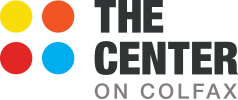There are many reasons businesses choose to become more openly and deliberately diverse and inclusive. While doing so simply because “it’s the right thing to do” may be admirable it doesn’t typically translate into business imperatives. What does make good business sense is to pay attention to the high potential costs of failure to address these important issues.
Some of the biggest impacts to business bottom lines due to lack of inclusion are: loss of human capital, costs of lower productivity and morale, costs of litigation and settlements, costs of loss of business from other inclusive companies, costs of loss of business from the gay and transgender community and their allies, costs of fines from regulatory agencies, and costs of losing business from customers due to loss of reputation or customers feeling unwelcome in your environment.
Today we are going to focus only on brand loyalty in the gay and transgender community. So how much would loss of business from the gay and transgender community cost? Measuring the true size of the American LGBTQ population can be challenging as it depends primarily on self-reporting, something not always a safe or comfortable thing to do, even here in the United States. The latest 2015 Gallup Poll results place LGBTQ people at 3.8% (other studies have estimated as much as 7%-8%) of the US population. The economic influence (or buying power) of the LGBTQ population continues to rise steadily from $790 billion in 2012 to $884 billion in 2014. So how does that compare to other minority group economic influence? In 2014 Native American buying power was $100 billion, Asian buying power was $770 billion, African American buying power was 1.1 trillion, and Hispanic buying power was $1.4 trillion.
LGBTQ populations have long been heralded as extremely brand loyal with 55% choosing to do business with companies that are committed to the diversity and equal treatment of the LGBTQ community (from Community Marketing Inc. & Harris Interactive). In their latest 2015 survey, Community Marketing Inc. found that pro-LGBTQ corporate policies have encouraged the LGBTQ community to make a conscious decision to purchase from a long list of brands with Apple, Target, Starbucks, Amazon, and Home Depot topping the list. The economic support from the gay and transgender community is more than surface level as well, with 70% of LGBTQ adults stating they would pay a premium for a product from an LGBTQ community supporting company and 78% of LGBTQ adults and their friends, family, and relatives saying they would switch to brands known to be LGBTQ friendly. The Human Rights Campaign publishes an annual Buyer’s Guide with equality scores to make it easier for LGBTQ shoppers to direct their dollars to inclusive companies.
On the flip side, gay and transgender persons are willing (the numbers average around 30%) to boycott businesses that they patronize for supporting anti-LGBTQ causes. Community Marketing Inc.’s 2015 report allowed LGBTQ respondents to list up to five companies they boycott and 74% listed a $6 billion fast food brand as the top brand they boycott. While boycotts rarely have a quantifiable effect on business sales, they can do serious damage to company brand perceptions over the long term.
Small and often low cost changes to your company policies, communications, and hiring practices can have a big impact on your brand perception in the competitive marketplace.
Invite RANGE Consulting to work with your business on strategies to more effectively attract and retain loyal LGBTQ customers and their allies to your brand today!
